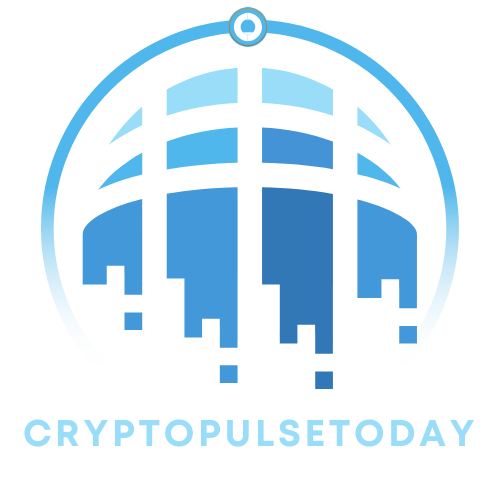Table of Contents
ToggleIn the fast-paced world of sales, having the right tech stack is like having a secret weapon. It can transform a struggling team into a sales powerhouse faster than you can say “CRM.” With the right tools, sales professionals can streamline processes, boost productivity, and ultimately close deals like a seasoned pro at a wine tasting.
But let’s be honest: navigating the sea of sales technology can feel like trying to find a needle in a haystack. From CRMs to automation tools, the options are endless, and choosing the wrong one could leave sales teams feeling like they’re running in circles. Fear not! This guide will break down the essentials of a killer sales tech stack, ensuring every sales rep can hit their targets without losing their minds (or their sense of humor).
Understanding Sales Tech Stack
A sales tech stack consists of a collection of software tools and technologies that support sales processes. These tools work in conjunction to enhance efficiency, streamline workflows, and improve sales performance.
Definition of Sales Tech Stack
A sales tech stack integrates various applications designed for different aspects of the sales cycle. Common components include customer relationship management (CRM) systems, email automation tools, and analytics platforms. Each tool serves a specific purpose, such as managing leads or tracking performance metrics. Teams customize their tech stack to meet unique business needs, ensuring alignment with sales goals.
Importance of a Sales Tech Stack
A well-defined sales tech stack drives productivity and facilitates seamless communication among team members. Efficient processes lead to faster conversions and more closed deals. Enhanced data analysis powered by these tools offers insights into customer behavior and market trends. Teams equipped with the right technology consistently outperform those that rely on outdated methods. Furthermore, a robust sales tech stack fosters collaboration by connecting various functions, such as marketing and customer support, creating a unified approach to sales.
Key Components of a Sales Tech Stack


A well-structured sales tech stack enhances performance through targeted tools. Understanding its key components helps teams maximize effectiveness.
Customer Relationship Management (CRM) Tools
CRM tools act as the central hub for managing customer interactions. They store vital data about leads and clients, improving communication and relationship-building. Popular options like Salesforce and HubSpot offer features for tracking interactions, managing sales pipelines, and automating follow-ups. Strong CRM integration with other tools enhances data flow and boosts overall productivity. The right CRM tool simplifies capturing insights, streamlining processes, and ensuring every lead receives attention.
Sales Enablement Platforms
Sales enablement platforms provide resources that empower sales teams to close deals efficiently. These platforms offer content management, training modules, and customizable sales playbooks. Tools like Highspot and Seismic equip teams with the right information at the right time, driving conversations. Enhanced collaboration among team members fosters knowledge sharing and resource accessibility. Utilizing these platforms positively impacts sales outcomes, as representatives can quickly access current materials tailored for specific audiences.
Analytics and Reporting Tools
Analytics and reporting tools deliver insights into sales performance and customer behavior. They help teams track key performance indicators (KPIs) and analyze trends over time. Solutions like Google Analytics and Tableau visualize data, making it easier to identify successful strategies or areas needing improvement. Leveraging these tools improves decision-making and leads to data-driven actions. Understanding analytics allows teams to refine their approaches, ultimately boosting conversion rates and enhancing overall effectiveness.
Building an Effective Sales Tech Stack
An effective sales tech stack aligns closely with business objectives and sales methodologies. Proper assessment of needs sets the foundation for success.
Assessing Business Needs
Determining business requirements starts with understanding the sales process. Evaluating team workflows helps identify gaps that technology can address. Organizations should consider current challenges and desired outcomes. Key metrics and specific goals, such as increasing lead conversion rates by 20%, guide this assessment. Engaging with sales representatives allows insight into their day-to-day hurdles and preferred tools. This collaborative approach ensures the tech stack addresses real-world issues.
Selecting the Right Tools
Choosing suitable tools involves not only function but also user experience. Each software solution should seamlessly fit into the sales process while enhancing productivity. Options like CRM platforms provide essential features for managing customer interactions. Sales enablement tools empower teams with relevant content and training. Evaluating tools based on scalability is crucial; organizations want solutions that grow with them. Conducting trials or demos of potential tools assists in making informed decisions before commitment.
Integration and Compatibility
Successful integration enhances the effectiveness of the sales tech stack. Tools must communicate well with existing systems, from CRMs to marketing automation platforms. Compatibility reduces friction and streamlines workflows. Organizations should prioritize solutions that offer robust APIs and support cross-platform functionality. Understanding potential integrations’ impact on daily operations ensures a smoother transition. Continuous monitoring post-implementation identifies areas for improvement and integration adjustments.
Benefits of a Well-Designed Sales Tech Stack
A well-designed sales tech stack offers various advantages that elevate a team’s performance and streamline operations.
Increased Efficiency
Tools in a sales tech stack automate repetitive tasks, freeing up time for sales representatives to focus on relationship-building. By using a centralized CRM, teams track interactions and manage pipelines with ease. Integration among platforms ensures data flows seamlessly between applications. Email automation tools keep communication consistent and timely. Streamlined workflows reduce manual efforts, enabling faster responses to customer inquiries.
Enhanced Customer Insights
Data collected through sales tech tools provides valuable insights into customer preferences and behaviors. Analytics platforms reveal trends, allowing teams to tailor their pitches more effectively. Understanding customer interactions helps refine strategies for engagement. Feedback loops established through surveys or follow-ups offer direct insights into customer satisfaction. Teams leverage this information to improve product offerings and enhance the customer experience.
Improved Sales Forecasting
Accurate sales forecasting becomes possible with robust analytics and reporting tools. Historical data analysis provides insights into future sales trends, helping teams set realistic targets. Combining data from various sources creates a comprehensive picture of sales performance. Teams can identify which products or services perform best under specific conditions. Predictive analytics also assist in spotting opportunities, enabling informed decision-making and resource allocation.




